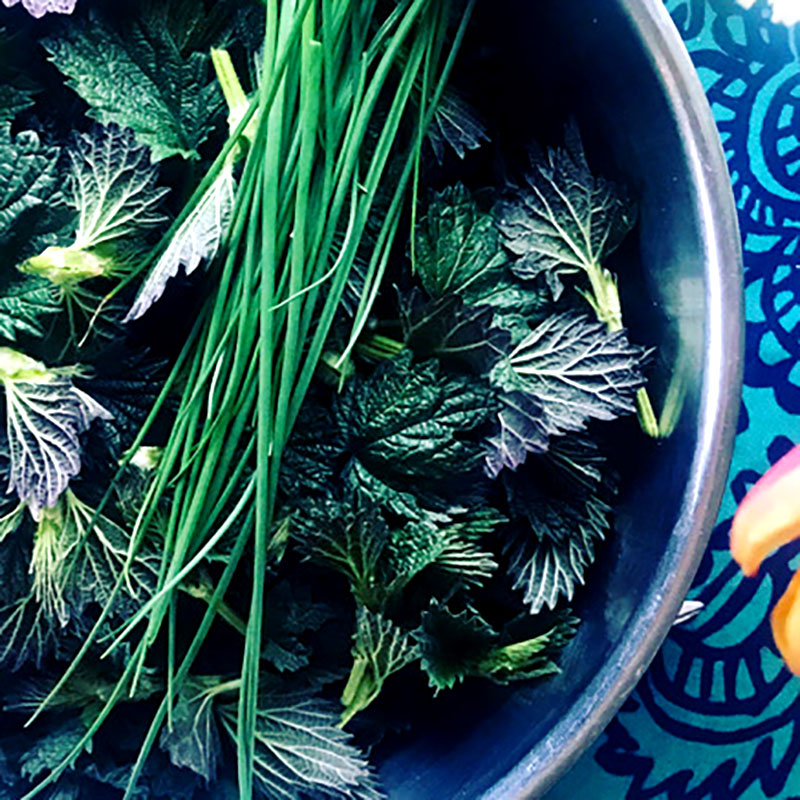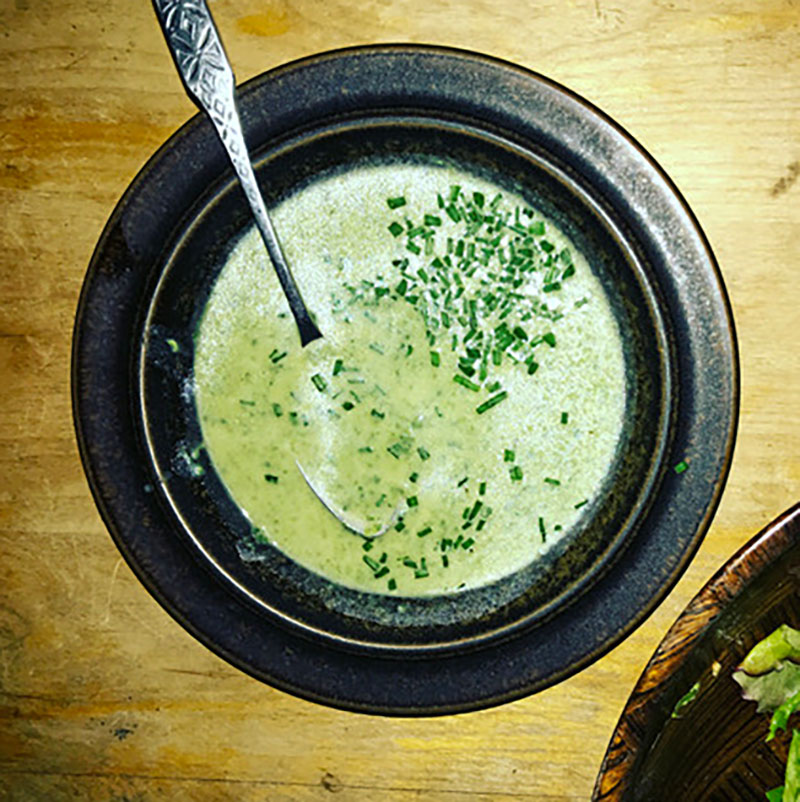reminiscences with Kirsten Aune

Nettles are a superfood, one of the earliest spring greens and one whose stalks can be used to make fiber! What’s better than this?
I used to belong to “the Goat Ladies Of The North”, a group of women who would gather once a month to share their cheese, stories, and cooking tips. I had goats when my children were young. They grew up on goat milk and helped me by decorating goat cheese with edible flowers and herbs, which we sold to help us to pay for the hay and feed that our animals needed. In return they gave us the freshest milk, the best cheese, and amazing experiences. My daughter at six was a goat dula!
We also took advantage of the many animal products learned from this group of women: fresh raw Jersey cow cream, goat butter, pigeon meat, guinea fowl, bear fat, goose feathers, handmade soaps and very interesting homemade cheeses! Whatever you wanted someone had or knew how to get it. I really wanted nettles, but I didn’t know where to find enough to harvest! One of the goat ladies, of course, had nettles out in her pasture. She told me to stop over and she showed me where to find them. She also told me that if I got stung, I was to chew on the leaves and apply my “nettle saliva” to the sting. My kids in the car, a storm approaching, I hurried out with a little hand shovel, quickly running back to the car with a nice bundle. I will never forget the sting! I spit and chewed all the way back to Duluth. I now know to harvest the leaves more carefully and with the proper equipment: good sturdy canvas or rubber gloves, a durable bag and scissors. Pants and a long-sleeved shirt are also helpful to avoid the spines (the technical term is “trichomes”) which are on both the stems and leaves.
Stinging nettles (Urtica dioica) are harvested in the early spring when the leaves are tender and before the flowers appear. Cut off only the top leaves (no longer than 3” wide) and drop them into your bag. When you get home, the trichomes will have deflated, so the leaves will have less “sting.” Drop the leaves into a sink or large bowl of warm water and let sit for about 10 minutes. This will release any “sting” that is left. Drain the leaves and use them immediately or store as you would spinach or lettuce.
My goats are long gone but their entire pasture is now nettles! I mostly dry them for tea but sometimes I steam them to add to quiches or to make this lovely cream of nettle soup.
Cream of Nettle Soup

6 cups water (vegetable or chicken broth will add more flavor)
3 large potatoes (about 1-1/2 lbs.), peeled and roughly chopped
6-8 cups nettle leaves, washed and prepared as described above.
3 tbsp butter
1 cup heavy cream
4 tbsp chopped chives
Salt and pepper to taste
In a large pot, melt the butter over medium high heat. Add the chopped onion and sprinkle lightly with salt. Cook, stirring occasionally, until the onions are soft but not brown. Add the chopped potatoes and the water (or broth) to the pot and bring to a boil. Reduce the heat to a simmer and cook until the potatoes are tender, about 15 minutes. Add the nettles and cook until they are tender, about 10 minutes. Puree the soup with an immersion blender or in a food processor or blender in batches. Add salt and pepper to taste. Stir in the cream and correct the seasoning, if necessary. Serve the coup hot, garnished with the chopped chives. Optional: swirl in some plain yoghurt or sour cream before sprinkling on the chives. Enjoy!
Yield: 4-6 servings
